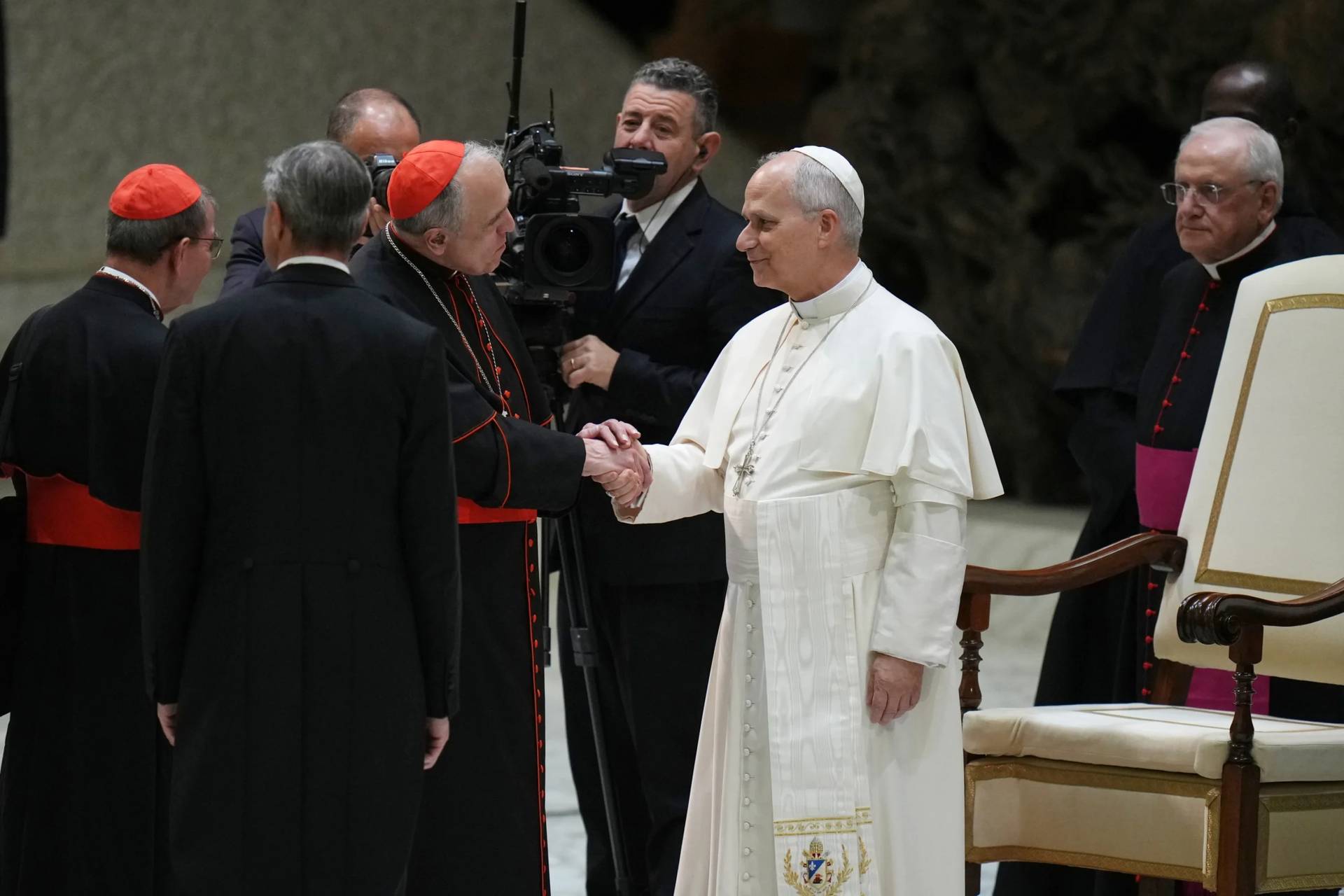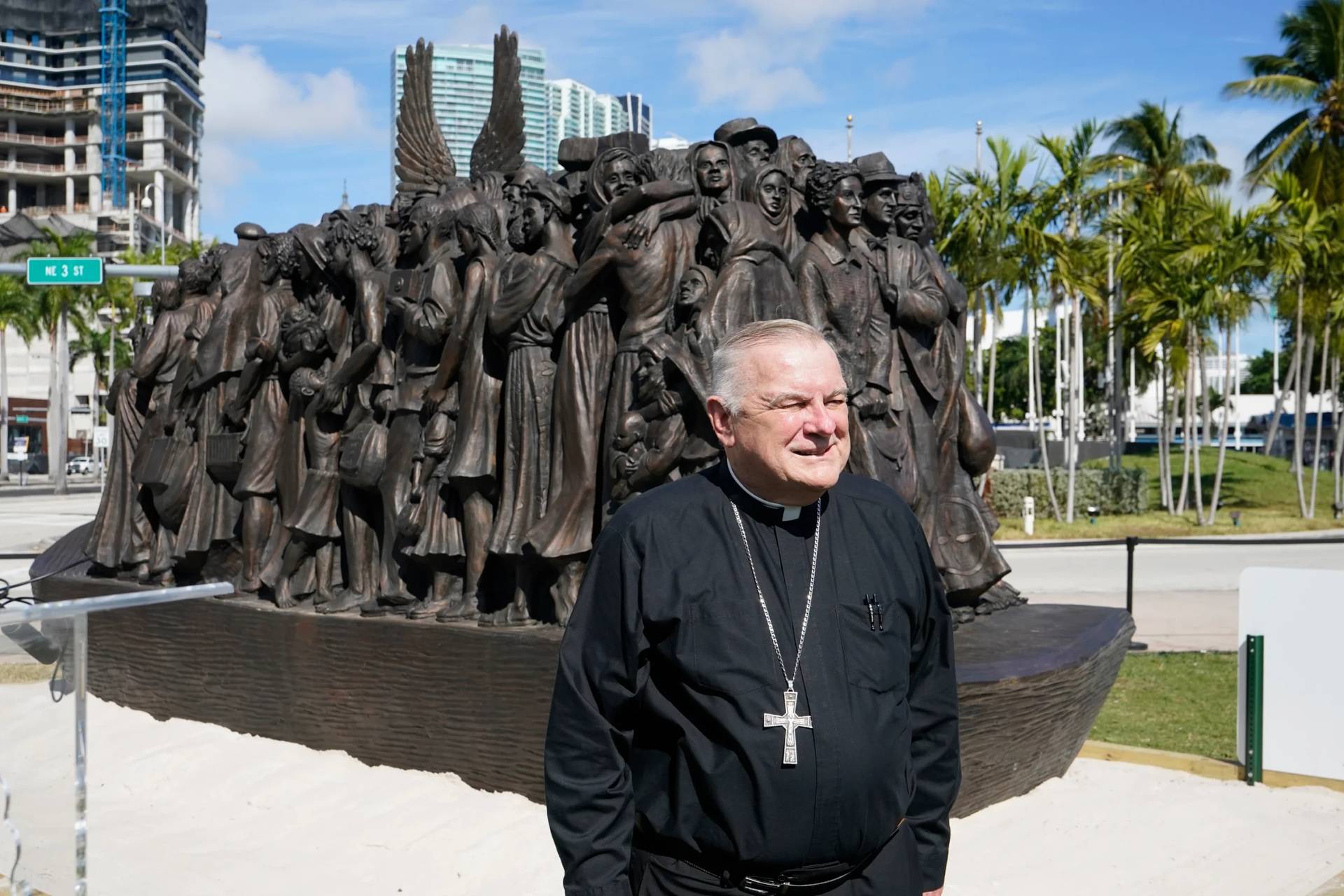ROME – While the dominant Vatican headline yesterday was Pope Francis’s triumphant return to form in the Palm Sunday liturgy after three days in Rome’s Gemelli Hospital for bronchitis, other tidbits, mostly in Sunday’s Italian press, have sort of flown below radar.
Herewith, then, a quick sampling of the other sights and sounds of Palm Sunday on the Tiber. Each in its own is interesting, if also, in each instance, maddeningly inconclusive.
Communications overhaul?
Luigi Bisignani, famous in Italy as the country’s premier “fixer” in both political and corporate life, published a piece in the conservative newspaper Il Tempo Sunday suggesting, among other things, that Pope Francis is about to move from his residence in the Domus Santa Marta, the hotel on Vatican grounds where he’s lived since his election, to the Mater Ecclesiae Monastery, where Pope Benedict XVI resided after his election.
What that assertion is based on isn’t clear — as is so often the case in Vatican coverage, no sources are cited, so it’s impossible to evaluate its credibility. The idea seemingly would fly in the face of Francis’s stated reason a decade ago for preferring the Santa Marta to the papal apartments, i.e., that he didn’t want to be isolated but rather preferred to be around people.
In any event, Bisignani’s main focus was on the Vatican’s Dicastery for Communions, where the five-year term of Italian layman and journalist Paolo Ruffini as director is up in July. Bisignani believes Pope Francis will be looking to make a change, especially in light of the poor marks the Vatican’s communications operations got during the pontiff’s recent hospitalization, when the absence of reliable medical information fueled uncertainty and speculation.
“The morning after he entered the hospital, given the contradictory news that began to circulate, the nunciatures and chancelleries of half the world began sending alarmed messages to know the real state of the pontiff’s health,” Bisignani wrote.
According to Bisignani, the pope is looking for a woman to replace Ruffini, and he offers a “short list” of four names:
- Stefania Falasca, an Italian journalist who came to prominence writing for the Catholic newsmagazine 30 Giorni, and who’s covered the Vatican for Avvenire, the newspaper of the Italian bishops’ conference, since 2013. She’s also played a key role in the sainthood cause of Pope John Paul I.
- Valentina Alazraki, a storied Mexican journalist who’s covered the Vatican since 1974 and the era of Pope Paul VI. In 2021, Pope Francis awarded her the Grand Cross of the Order of Pius IX in recognition of her many years of service, along with Phil Pullella of Reuters.
- Nicole Winfield of the Associated Press, an American journalist known, as Bisignani puts it, for “telling it like it is” and for being “tough,” which is why, he says, that Pope Francis likes her.
- Giorgia Cardinaletti, an Italian journalist and TV personality who rose to prominence covering Formula One racing and who’s now the host of a main evening news program on the Italian national broadcaster RAI.
As ever, we’ll see if any of those predictions pan out. In the meantime, Bisignani asserts that the main challenge for the Dicastery for Communications is that it purports to speak in the name of the pope, but in reality the pope takes little interest in its work and doesn’t consult it before making his own public statements.
An atheist’s take on Pope Francis
Piergiorgio Odifreddi, a mathematician, philosopher and essayist, is arguably Italy’s most famous atheist, the honorary president of the country’s “Union of Atheists and Rational Agnostics.” In Vatican circles, he’s known for a respectful correspondence he carried on with the late Pope Benedict XVI, which culminated in the 2011 book Caro Papa, Ti Scrivo (“Dear Pope, I’m Writing You.”)
Their exchange was occasionally feisty – at one point, Benedict accused mathematicians and other empirical scientists of occasionally lasping into “science fiction,” and said Odifreddi himself seemed to desire a “religion of mathematics.” Nevertheless, the two men clearly liked each other, with Benedict saying at one point that despite their disagreements, “we also have some points of convergence.”
On Sunday, the digital platform “fanpage.it” carried an interview with Odifreddi about Pope Francis. To begin with, Odifreddi argued that the pope’s recent hospitalization underscored the need for a fixed retirement age for pontiffs, which he suggested should be set at 80.
“Today a pope is constantly in the spotlight, traveling a great deal and continually making important decisions,” he said. “It’s an exhausting job, like being a head of state or the manager of a large company, and it’s unthinkable that men over 90 could have the energy necessary to tolerate its demands.”
He isn’t optimistic about that happening, however.
“At bottom, it’s a matter of deciding whether to continue to trust in metaphysics, in the capacity to hold onto power until death, or to accept a very normal principle of reality,” he said. “I fear I already know the answer – anyway, metaphysics are their specialty.”
Perhaps most interesting is Odifreddi’s take on Pope Francis, given his friendship with his predecessor.
“I don’t understand [Francis] very well, but then he’s a Jesuit, so not being understood is sort of his mission,” Odifreddi quipped.
“I don’t like his character very much,” he said. “He seems an irascible and vindictive person towards those who don’t agree with him, as we’ve seen in his treatment of some figures in the Roman Curia,” he said, citing the cases of German Cardinal Gerhard Müller and Archbishop Georg Gänswein. (The irony of a left-leaning secularist complaining about a progressive pope’s alleged mistreatment of two conservative prelates speaks for itself.)
“I find this way of acting hardly commendable,” Odifreddi said, “but then again, he’s a Jesuit.”
Perhaps the reaction is a reminder that in addition to left v. right, there are many other ways of seeing popes and papacies. Like Odifreddi, many intellectuals, regardless of their ideological orientation, saw a kindred spirit in Benedict XVI, whereas popes closer to the street than the seminar room aren’t necessarily to their taste.
In any event, Odifreddi’s reactions are also an interesting guide to what non-Catholics and non-believers, who nevertheless live cheek by jowl with the Vatican, may be thinking these days.
‘Monsignor 500 Euro’ acquitted
Now in his early 70s, Italian Monsignor Nunzio Scarano worked for more than twenty years as an official in the Vatican’s Administration of the Patrimony of the Apostolic See (APSA), its main financial department, until his removal in 2013. The exit came after his arrest for allegedly being part of a $30 million scheme to smuggle cash from Switzerland into Italy on behalf of a family of Italian shipping magnates, in tandem with a former agent of the Italian secret service.
It turned out that in Roman eateries, Scarano had been dubbed “Monsignor 500 Euro” for the thick wad of cash he would flash when settling checks, which was considered a bit odd for a mid-level Vatican official ostensibly making about $30,000 a year. It also emerged that he possessed valuable artworks and high-end real estate that seemed beyond his means, though he insisted they were the result of inheritances and gifts.
At the time, even Pope Francis seemed ready to throw Scarano under the bus. In his first airborne news conference he took a question about the case, in which the pontiff said that the monsignor “certainly isn’t in jail because he resembles Beata Imelda!” (The reference is to an Italian mystic, and it roughly translates as “he’s no saint.”)
In fact, Scarano eventually was acquitted of all charges for his role in the cash-smuggling scheme.
Nevertheless, his arrest triggered a still-ongoing legal odyssey, the latest development in which came recently when he was acquitted of a charge of usury in his native Salerno in southern Italy over two loans of 10,000 Euro each he’d made to a local doctor. The court concluded that the loans were repaid without interest, and therefore no crime had been committed.
Last year, Scarano was convicted of money-laundering for what prosecutors described as more than $600 million in fake donations, with an additional penalty of the confiscation of goods belonging to Scarano reportedly valued at $2.6 million. His appeal of that conviction is set to be heard in August.
As part of the ongoing investigation, this past week a safety deposit box belonging to Scarano in the Institute for the Works of Religion, popularly known as the “Vatican bank,” was opened by security personnel. According to media reports, it contained six folders with paperwork documenting that various holdings of Scarano, including valuable religious artwork, were the result of gifts from wealthy Italian families.
In effect, the defense argument seems to be that while Scarano may have displayed a zest for the finer things and hobnobbing with deep-pocketed individuals, which may be unseemly for a Vatican official in the Pope Francis era, he didn’t actually commit any crimes.
No matter how the legal battle turns out, the saga is a reminder of a media law of life: We usually cover an arrest, especially when it involves a Vatican official and charges of corruption. Once things get messy, complicated and time-consuming, however, we usually tune out – even if the outcome raises questions about whether the original round of headlines were justified in the first place.















